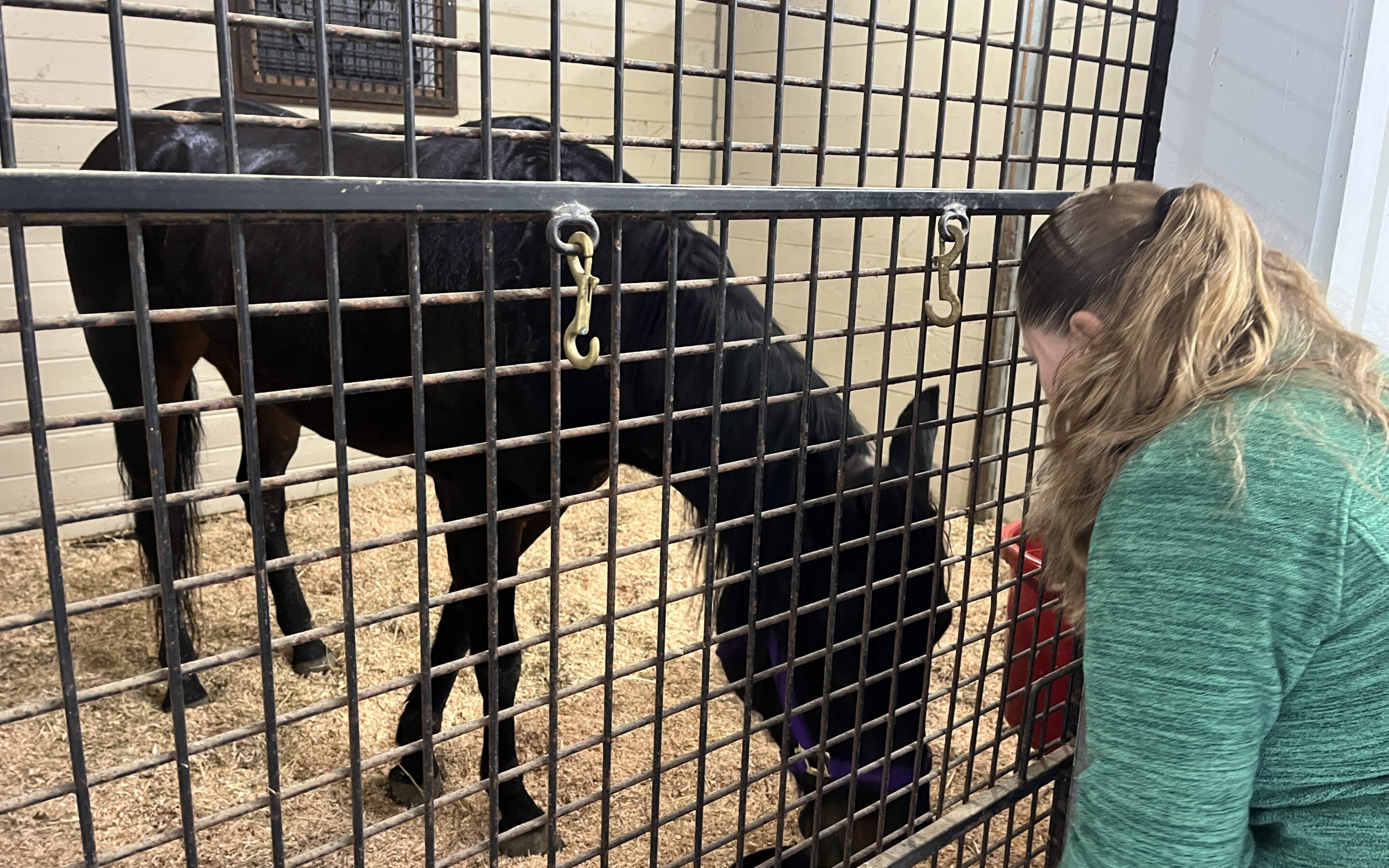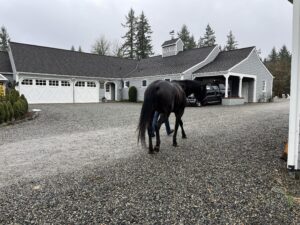Nova’s journey from foal to adulthood has been a tumultuous one to say the least. She was a delightful and friendly girl for the first two years of her life…but then we started to see changes. Her heat cycles, which started out normal, became problematic. She began to exhibit more and more hormonal behavior, and as she got older, she started to show worrisome signs of aggression, What made Nova’s situation so challenging to manage was the unpredictability of it all, her lightning-fast switch from docile to dangerous. While it was difficult not to rule out behavioral components entirely, the suddenness of her transformation made it seem more physiological than anything.
We tested Nova’s hormone levels in the fall, and while there was a slight elevation in her testosterone, it was back within the (higher end) of normal range by spring. We ran other bloodwork to check for granulosa cell tumors — no evidence. We ultrasounded her ovaries, and while one was larger than the other, there was nothing that stood out to the vets as a clear-cut issue. We started Nova on Regumate — first 10mls, then 15, then up to 20. We had her on first Mare Magic, then magnesium, both known for their calming properties. Nothing made much of a dent in her behavior. While she did have some ‘good’ days during the fall months, a return to form of the sweet Nova we knew and loved, from one day to the next she could morph into a horse we didn’t recognize. After additional consultation with our vets, and feeling like we had exhausted our non-invasive options to help Nova, we decided to set a date for a spay.
Spaying a mare is not a common practice, as it is more intensive and specialized than a gelding surgery. With geldings, we have the option to perform them on site here at SAFE — such a thing is not possible for a spay. In addition, because it is not routinely done, not every vet can perform the surgery. Luckily, our vets at Rainland had plans to host a surgeon from WSU, and we were able to get on the docket for Nova’s spay. They set a date in late January, and we eagerly counted down the days until we could — hopefully — finally help Nova.
To prep for the surgery, we had to cut Nova’s food way back, as they wanted her colon as empty as possible for the procedure. So for the few days leading up to the date of her spay, Nova ate tapas — a few pounds of grain, top dressed with corn oil. Thankfully, if she was feeling hangry, she didn’t show it. On the day that we trailered her to the clinic she loaded easily and without fuss. The ride is not a long one, and Nova led off calmly once at Rainland, settling into her temporary digs with an almost abnormal mellowness. It is in these glimpses of what a reasonable horse she can be that really help to solidify we are making the correct choice in trying to help her through a spay.
The procedure itself, a laparoscopic ovariectomy, took only about an hour. Two small incisions are made on either side of the horse, one for the camera and the other for the tools, and the ovaries are removed. During the procedure, the horse remains standing. Modern medicine truly is amazing! Rainland kept Nova overnight following the procedure, but we picked her up in the afternoon the day after. She arrived back at SAFE bright eyed and bushy tailed, in eager anticipation of what we hope will be a new lease on life (though more realistically, probably just excited to get back to eating full meals again).
Nova is currently taking it easy, recovering in a small paddock where she can’t quite romp, but can still move around a bit. She will rest for about two weeks, and then can move back to a larger location. Her work can begin again after a month has passed, which will be around the beginning of March — stay tuned.
We are optimistic that this procedure will have made a difference in helping Nova feel better, and that removing the hormonal component from the equation will help Nova be able to live her best life!



